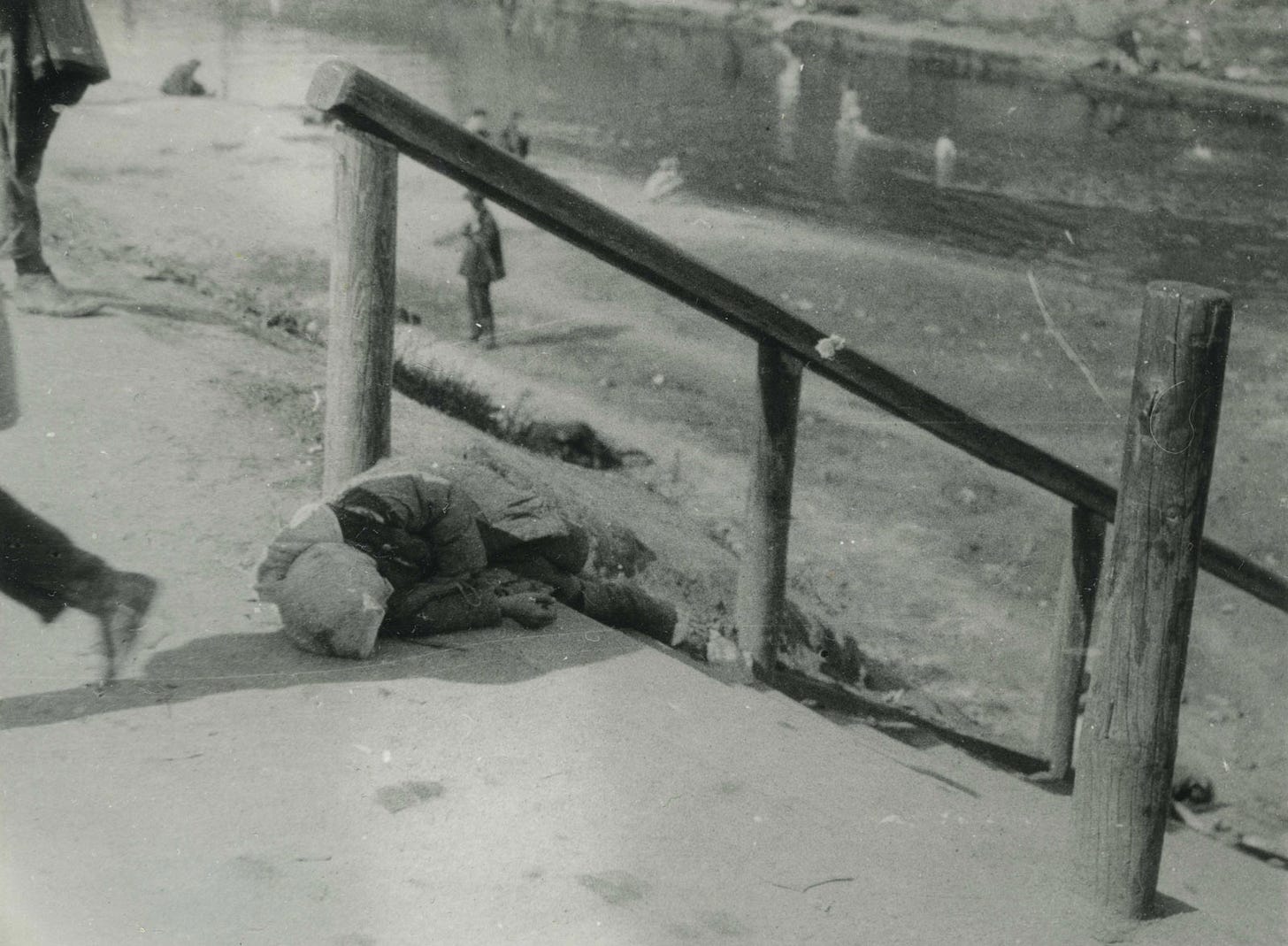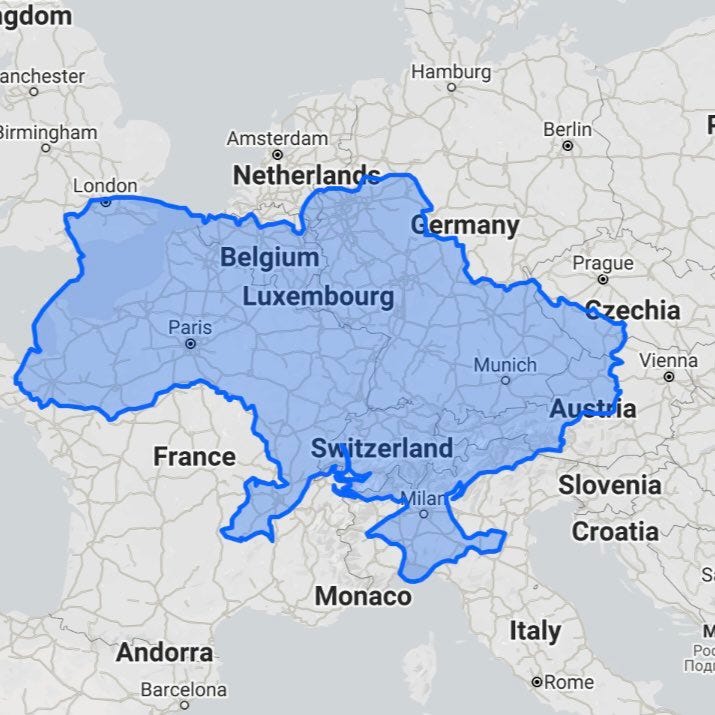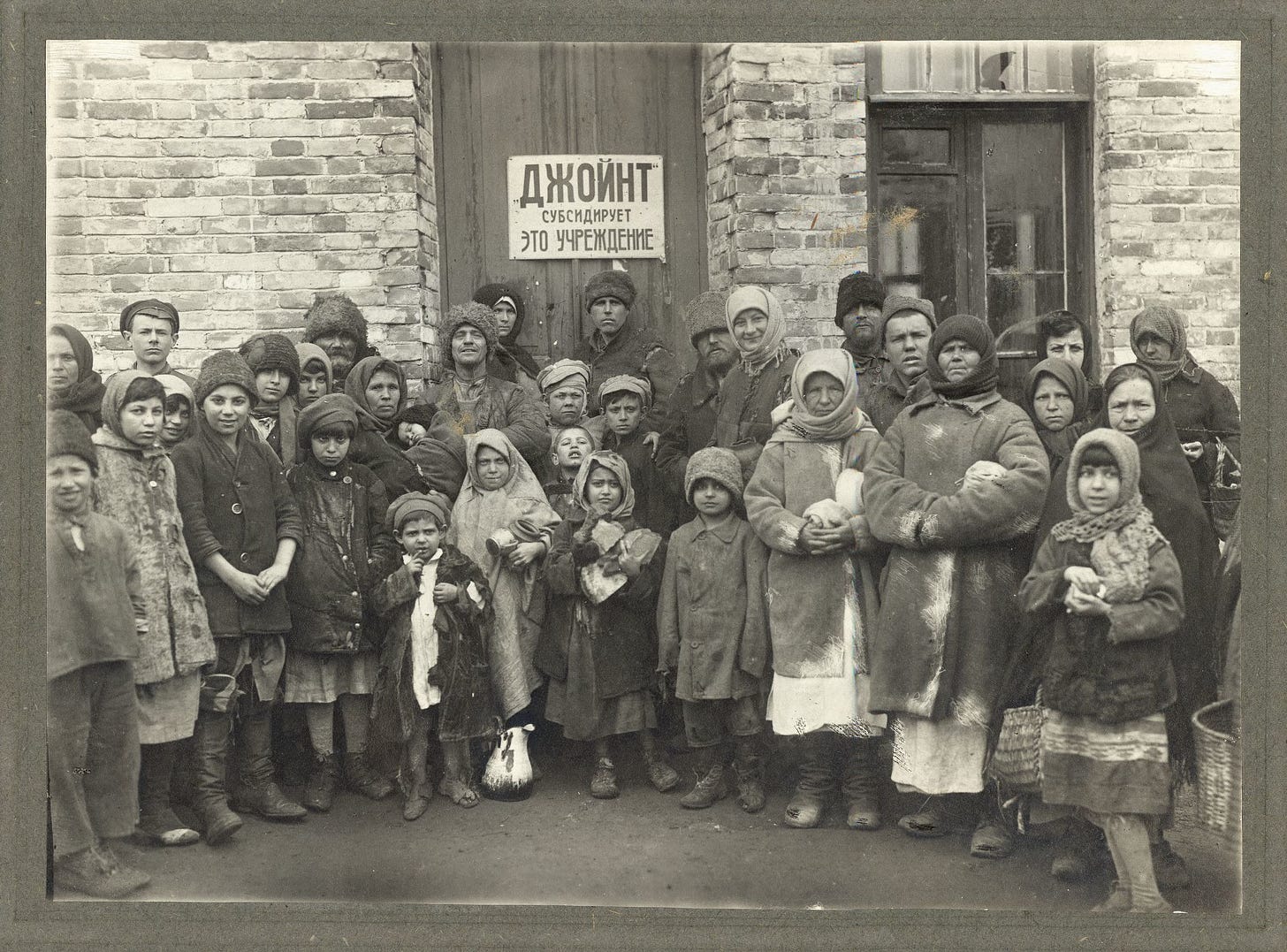On Thursday morning, the world woke up to Russian tanks rolling across the Ukrainian border and airstrikes right and left. It took a lot of people (including some Russians) by surprise. Even now, as Ukrainian citizens struggle for survival and Russian President Putin underestimates resistance to war in Ukraine and his own country, the endgame seems unclear, but the echoes of history are everywhere.
On Thursday night I posted a short piece on Ukraine on Facebook and Instagram. It went a bit viral (well, for me), so I decided to revisit the topics I covered and take a little deeper dive into the food history between Ukraine and Russia.
I’ve long had an interest in Eastern European foodways. Although each nation from the North Sea to the Black Sea and east to the Pacific has its own unique foodways, they have a lot of commonalities. Fresh cheeses, lots of herbs and eggs, lots of vegetables, pickled and fermented foods, fish and game, dark bread, cooked grains, dumplings, fruit and nut desserts. Some of these commonalities are due to the the common indigenous ingredients and terrain. Others are due to colonization.
You’ll notice I haven’t yet named the individual countries - that’s because all too-often they are lumped together as monolith. But they aren’t. Colonized by Russia and later by the Soviet Union, many of these nations, including Ukraine, are still feeling the effects of colonization. Russian people often emigrated to these regions, especially coastal areas. Mild, fertile Ukraine was a popular destination and today approximately 20% of Ukrainians are ethnically Russian. Russian language, Russian foods, Russian culture were all superimposed over what was already there. You may have noticed lately that media outlets are referring to the capital of Ukraine as “Kyiv” and pronouncing it “Keev.” If you remember it being spelled “Kiev” and pronounced “Kee-yev,” then you’re remembering the Russian spelling and pronunciation. “Kyiv” is the Ukrainian way.
Ukraine is one of the largest of the former Soviet nations and has long been referred to as the “Breadbasket of Europe.” That’s no exaggeration. With a landmass larger than France and a quarter of the world’s extraordinarily fertile “black dirt,” Ukraine today is third in the world in grain production and is a major producer of sunflowers (for oil), soy, and sugar beets. Even so, its agricultural production lags behind other developed nations due to lack of capital and a longstanding moratorium on the sale of agricultural land, which just ended in 2020.
This fertility, along with access to the Black Sea, were why Ukraine was such a crucial country to control throughout the 19th and 20th centuries. Control of fertility and trade routes means control of wealth. But Ukrainians have long had a strong identity separate from Russia, although it’s not always clear to outside observers, whose only references are often from the perspective of the colonizers - first the Russian Empire, and later the Soviet Union. When it comes to food, Ukrainians claim borsch as theirs (as Time Travel Kitchen recently covered), both red and green, among other dishes.
So how to control a fertile nation of independent farmers? Control the food supply.
From Catherine the Great onwards, foreign agriculturalists were imported from Germany to work the land in Ukraine and elsewhere. Mennonites, in particular, fleeing religious persecution and mandatory military conscription, settled in the Black Sea region and along the Volga. These non-citizens, beholden to the central government, helped dilute the power of native farmers.
When the waiver for military conscription and separate citizenship ended in the mid-19th century with the ascension of Alexander II of Russia, many Germans from Russia emigrated to the United States. Of those from Ukraine, most settled in North Dakota (my home state). Many native Ukrainians followed suit.
By the turn of the 20th century, the Russian Empire was in trouble. The extreme wealth of the Tsar and aristocracy in Russia stood in stark contrast to the conditions of peasant farmers and industrial workers. The peasants, in particular, though “freed” from serfdom by emancipation reforms in 1861, were still essentially tied to meager pieces of land they could not sell, but still owed taxes on. The Russo-Japanese War, where Russia tried to expand its empire into Manchuria (northeastern China) and lost, shifted the balance of power in Asia toward Japan. Emperor Nicholas II was so stubbornly committed to the war, despite the losses, that it took U.S. President Theodore Roosevelt to broker the peace. Extreme income inequality combined with the ruling class’ thirst for war resulted in the 1905 Revolution, where Nicholas II was forced to make some concessions. They would not be enough.
The winter of 1916-17 saw incredible price jumps around the world in the cost of food staples. At the same time, wages were remaining stagnant. Stagflation was a problem throughout the world, including the United States, where food riots broke out in February and March in New York City, Chicago, Philadelphia, and elsewhere. A month later (still February in Russia, which was on the old calendar), women protesting for bread helped spark the February Revolution, which overthrew the monarchy and set the stage for Bolshevism to fully take over in the October Revolution of 1917, leading to the world’s first socialist state. But things quickly devolved into Civil War as the Bolshevik “Reds” fought the bourgeoisie “Whites” for control of the Empire. The “Reds,” under the leadership of Vladimir Lenin, finally gained full control in 1919. It is worth noting that much of Ukraine supported the Whites, and that Ukrainians battled for independence between 1917 and 1922.
But by the time Lenin took power in 1919, the warring factions had denuded the countryside of food for several years. During the war, agricultural production had actually fallen. Post-war, peasants who had their entire harvests stolen planted less. Combined with a drought, 1919 brought famine across the Russian (now Soviet) Empire. Soviet policies to take from the countryside to feed the cities further exacerbated rural hunger.
The United States' American Aid Administration, headed by former Food Administrator Herbert Hoover, offered Lenin aid as early as 1919. He refused. By 1921, conditions were so bad, with so many starving, he finally let foreign aid groups in.
This photo (from the Library of Congress) is of people lined up, waiting for a soup kitchen to open in Aleksandrovsk (present-day Zaporozhye), Ukraine, in 1921. It was taken by the Joint Distribution Committee of American Funds for the Relief of Jewish War Sufferers (later the American Jewish Joint Distribution Committee, both names abbreviated as the JDC), which provided food on a nonsectarian basis to millions of starving people in Ukraine, Russia, and Crimea, under the auspices of the American Aid Administration. The foreign aid groups, organized by Hoover, were able to mitigate the worst case scenario, but government suspicion and sabotage prevented the saving of many more lives. Five million people died over the course of the famine, which was so bad that in some areas people resorted to cannibalism to survive.
Although this famine was notoriously bad (see: PBS's "The Great Famine" for the full, and horrifying, story), just a decade later the people of Ukraine would suffer even more.
In 1929, the Soviet Union under Stalin collectivized Russia’s agriculture, particularly in Ukraine, where over 85% of people live in rural areas. Land and personal property, sometimes even housing, was seized by the government and people were re-housed onto enormous collective farms. Wealthier peasants and anyone who resisted were deported. But agricultural production, already depressed, actually fell with the new reforms. Unsurprisingly. Taking away peoples’ livelihoods and forcing them to work without reward hardly encouraged industry. Armed uprisings across Ukraine were suppressed, but Stalin was worried that Russia would “lose Ukraine.” So he hatched a terrible plan.

The Soviet Union under Joseph Stalin perpetrated a man-made famine on Ukraine known as the Holodomor, or "murder by hunger." Farms and villages were prevented from receiving outside food. Peasants were forbidden to leave Ukraine. Food requisitions for export elsewhere in the Soviet Union were increased, and insufficient aid was provided to the starving people. By the winter of 1932-33, police were actively invading peasant homes and stealing everything edible, including pets. By the spring of 1933, death rates across Ukraine skyrocketed. At the same time, Ukrainian culture and language were also attacked in a campaign to suppress dissent and independence movements. All news of the famine and the accompanying uprisings were suppressed in the Soviet press. Although around 5 million people died from the famine across the Soviet Union, an estimated 3.9 million of them were Ukrainian.
The Holodomor is now recognized by Ukraine and other nations as a genocide.
During World War II, Ukraine was brutally occupied by the Nazis, and mass murder of Ukrainian Jews continued from 1941 to 1944 - killing nearly 1.5 million people. More Ukrainians were taken to Germany for forced labor, and the collective farms were not disbanded, as some had hoped, but rather exploited. An underground resistance formed, but in the end, again, Ukraine bore the brunt of human cost - some 5 to 7 million people died during the war, and some 40% of Ukraine’s national wealth was destroyed.
After the war, another famine, this time from 1946-47, again hit Ukraine hard. A combination of postwar recovery, another drought, and the refusal of the central Soviet government to reduce exports or expand domestic aid (food prices actually rose) led to the deaths of another approximately 1 million people across the USSR, with 300,000 in Ukraine alone. For decades this third famine was scarcely known, because the Soviets suppressed the news so effectively.
In 1991, Ukraine was one of the first of the Soviet republics to vote for independence from the USSR. And no wonder. Between 1920 and 1950 alone, over 15 million Ukrainians died through Soviet policies - either famine mismanagement and genocide, or war. This number does not include those killed in resistance movements nor those who were deported or emigrated. For context, Ukraine’s population today is just under 45 million people.
The strongman in the Kremlin is trying to recoup what he sees as the power of the Soviet Union. But for many Ukrainians, the Soviet Union only means death.
This is the context by which we must understand Ukraine today. This is why the Ukrainian people have taken up arms against Russian invasion. After centuries of striving, in 1992 Ukraine was finally independent. But thirty years later, an egotistical autocrat with a nostalgia for empires past has decided to invade his fertile neighbor in an effort to rebuild that which failed. Sound familiar? Like I said, the echoes of history are everywhere.
As Russia bombards Ukrainian cities, especially Kyiv, Ukrainians are taking shelter in the subways, just like their British counterparts did during the Bombing of London in World War II. Ukrainian citizens have taken up arms or are engaging in acts of sabotage against the invaders, just like the French Resistance in World War II and American Continentals during the American Revolution. Ukrainian parents are loading their children onto busses and trains to escape the bombardment, just like British parents did during World War II. And like Vichy France and Loyalists in America, Ukraine has those who support the invaders. Who will win out remains to be seen, but Putin may yet learn a very hard lesson - it is costly and expensive and unpopular to waste money and lives in an invasion and occupation. And for what? Ego? Control of a food supply? To distract from dissent at home?
The greatest threat to men like Vladimir Putin is, of course, to show the way forward without him. Ukraine was becoming a successful, independent democracy, and allied increasingly with Europe. Putin knows that autocracy and oligarchy only benefit a tiny minority, and depend on a blindly loyal (or cowed and submissive) populace to prop up their overlords. But for the better part of a decade he has constructed his own reality, and the West has largely allowed him to do so, first in Georgia, then in Crimea, then in Syria. And now, Ukraine. But his reality is a false one. And his plan to retake Ukraine is not going as planned. This morning, a frustrated and increasingly desperate Putin threatened nuclear escalation.
What happens next, no one can know.
My heart is with the Ukrainians who once again are faced with violence and terror and are rising up to fight it. My heart is with other former Soviet states, including the Baltics - Estonia, Latvia and Lithuania - Georgia, Azerbaijan, Armenia, and the Central Asian countries, who must now face the specter of Russian aggression again. My heart is also with Poland, Finland, and Sweden, all of whom Putin has threatened in recent days. And finally, my heart is with the ordinary Russian people, bewildered by this violent action and risking their own lives to speak out and protest a government with a habit of poisoning political enemies and disappearing political prisoners. I can only hope the world can do enough to prevent more suffering and death.
Know your history, be vigilant against propaganda, and do your fact-checking homework.
What I’m Reading:
(Note: If you purchase anything from these Amazon links I’ll receive a small commission)
Cuisines of the Caucasus Mountains: Recipes, Drinks, and Lore from Armenia, Azerbaijan, Georgia, and Russia: Recipes, Drinks and Lore from Armenia, Azerbaijan, Georgia and Russia by Kay Shaw Nelson (2002). I ordered this and started reading it before the invasion. I’ve started cooking from this one as well, so be sure to visit The Food Historian blog for some recipes soon.
Fresh from Poland: New Vegetarian Cooking from the Old Country by Michal Korkosz (2020). This was a mid-pandemic treat to myself last year, and I’m revisiting it this week. It’s delightful and filled with lovely ideas.
Valentina’s Ukrainian Kitchen by Valentina Popel (1983). This book is out of print, but Valentina had a cooking show on Prairie Public Television in Fargo, North Dakota (my hometown) in the 1980s. Sadly, I never saw an episode (I think it was off the air by the time I was born), but I live in hope. Valentina writes with such a cheerful warmth, it’s like getting a hug from a favorite aunt.
Summer Kitchens: Recipes and Reminiscences from Every Corner of Ukraine by Olia Hercules (2020). This one had been on my wish list for a long time, and I finally bought it the other night. It should be at my doorstep by Monday, and will make for good reading both to honor Ukraine, and also plan for summer cooking.
Join the Conversation:
Pull up a chair and join us at the table. Leave your thoughts in the comments below. What ties, if any, do you have to Ukraine? Do you remember the Soviet Union? Do you have favorite foodways among the Eastern European nations? What do you think the future holds?






Wow, Sarah. Thank you so much for this historical timeline of Ukraine. So important to understand the past to help us manage the present. My thoughts and prayers are with all of those effected by this senseless, ego-driven assault.
This is wonderful, Sarah. Thank you for this history! I have Olia’s book (also, Mamushka) so good.